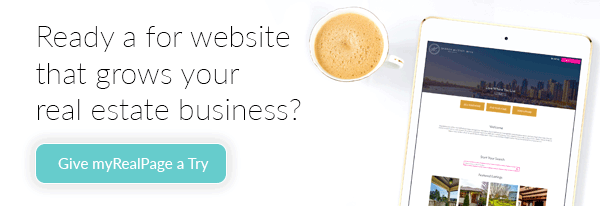5 steps to improve your real estate website in 2024

A real estate agent website is more than just a business card. It’s a powerful tool for attracting potential clients, showcasing properties, and closing deals.
However, with the ever-increasing competition in the real estate market, having a website is not enough. It needs to stand out, perform well, and offer a seamless user experience.
This is where real estate website improvement comes into play.
Improving your real estate website involves various aspects. From optimizing for search engines (real estate SEO) to enhancing user experience, every detail counts.
In this article, we will guide you through five key steps to improve your real estate website in 2024. These steps are based on the latest trends and best practices in real estate marketing and website optimization.
By following these steps, you’ll be able to enhance your website’s performance, visibility, and lead generation potential.
Let’s dive in and start the journey towards a more effective real estate website.
Step 1: Optimize for User Experience (UX)
The first step in improving your real estate website is to optimize for user experience (UX). UX refers to the overall experience a user has while interacting with your website.
A well-optimized UX can keep visitors engaged, encourage them to explore your listings, and ultimately convert them into leads.
Here are two key areas to focus on when optimizing your website’s UX:
- Mobile responsiveness
- Intuitive navigation
Let’s delve into each of these areas.
Prioritize Mobile Responsiveness
In today’s world, a significant portion of web traffic comes from mobile devices. Therefore, having a mobile-responsive website is no longer optional; it’s a necessity.
A mobile-responsive website adjusts its layout and elements to fit the screen size of the device it’s viewed on. This ensures a seamless browsing experience for all users, regardless of their device.
Implement Intuitive Navigation
Intuitive navigation helps users find what they’re looking for quickly and easily. This includes a clear and concise menu, well-organized pages, and a robust search function.
Remember, the easier it is for users to navigate your site, the longer they’re likely to stay. And the longer they stay, the higher the chances of them becoming leads.
Step 2: Leverage Local SEO and Content Marketing
The second step to improve your real estate website is to leverage local SEO and content marketing. SEO, or Search Engine Optimization, is the practice of optimizing your website to rank higher in search engine results.
Local SEO, on the other hand, is a subset of SEO that focuses on optimizing your website to attract traffic from a specific geographical area.
Here are two key areas to focus on when leveraging local SEO and content marketing:
- In-depth keyword research
- Valuable, localized content
Let’s delve into each of these areas.
Conduct In-Depth Keyword Research
Keyword research is the foundation of any successful SEO strategy. It involves identifying the words and phrases that potential clients are using to search for real estate services in your area.
These keywords should then be incorporated into your website’s content, meta tags, URLs, and other on-page elements. This helps search engines understand what your website is about and rank it accordingly.
Remember, the goal is not to rank for every keyword, but for the right keywords that will attract qualified leads.
Create Valuable, Localized Content
Creating valuable, localized content is a powerful way to attract and engage your target audience. This could be blog posts about the local real estate market, guides for homebuyers and sellers, or neighborhood profiles.
Localized content not only helps you rank for local search terms but also establishes you as an authority in your area.
Ensure your content is well-written, informative, and includes your target keywords naturally.
Step 3: Enhance Property Listings for Maximum Engagement
The third step to improve your real estate website is to enhance your property listings. Property listings are the heart of any real estate website. They are what potential clients are looking for when they visit your site.
Here are two key areas to focus on when enhancing your property listings:
- SEO-optimized listing descriptions
- Professional photography and virtual tours
Let’s delve into each of these areas.
Optimize Listing Descriptions with SEO
The descriptions of your property listings play a crucial role in attracting potential clients. They should be informative, engaging, and optimized with relevant keywords.
A well-optimized description helps your listings rank higher in search engine results. This increases their visibility and attracts more traffic to your website.
Remember to write for your audience first, then for search engines. Avoid keyword stuffing and aim for a natural use of keywords.
Use Professional Photography and Virtual Tours
High-quality images are essential for showcasing your properties in the best light. They capture the attention of potential clients and encourage them to explore the listing further.
Virtual tours, on the other hand, provide a more immersive experience. They allow potential clients to explore the property from the comfort of their own home.
Both professional photography and virtual tours can significantly enhance the appeal of your property listings and increase engagement.
Step 4: Utilize Analytics and User Feedback for Continuous Improvement
The fourth step to improve your real estate website is to utilize analytics and user feedback. These tools provide valuable insights into your website’s performance and user behavior.
Here are two key areas to focus on for continuous improvement:
- Tracking website performance with analytics tools
- Gathering and acting on user feedback
Let’s delve into each of these areas.
Track Website Performance with Analytics Tools
Analytics tools, such as Google Analytics, provide valuable data on your website’s performance. They track metrics like page views, bounce rate, and average session duration.
These metrics give you insights into how users interact with your website. They help you identify areas of your website that are performing well and those that need improvement.
Regularly monitoring these metrics allows you to make data-driven decisions for your website improvement efforts.
Gather and Act on User Feedback
User feedback is a valuable resource for improving your website. It provides insights into what users like and dislike about your website.
You can gather user feedback through surveys, feedback forms, or social media. Be sure to ask specific questions to get actionable insights.
Once you’ve gathered feedback, act on it. Make necessary changes to your website based on the feedback you receive. This shows users that you value their input and are committed to improving their experience.
Step 5: Ensure Compliance and Security
The final step to improve your real estate website is to ensure security. This is crucial for protecting your website and your users’ information.
Secure Your Website with HTTPS
HTTPS is a protocol for secure communication over a computer network. It protects the integrity and confidentiality of data between the user’s computer and the website.
Securing your website with HTTPS is crucial for protecting your users’ information. It encrypts the data sent between the user and the website, preventing hackers from stealing it.
To implement HTTPS, you need to obtain an SSL certificate for your website. This certificate also serves as a trust signal, showing users that your website is secure.
Conclusion
Improving your real estate website is a continuous process. It involves optimizing for user experience, leveraging local SEO and content marketing, enhancing property listings, utilizing analytics and user feedback, and ensuring compliance and security.
Whether you’re a real estate agent, a broker, or a marketing professional in the industry, this ultimate guide on how to create a real estate website is also a great piece that can help you with these efforts.
By following these five steps, you can create a website that attracts more visitors, generates more leads, and ultimately, closes more sales. Did you know that all of our myRealPage websites are built with these principles in mind. Everything on this list can be done pretty easily with a myRealPage Real Estate Website. Get your real estate website today!
Remember, the goal is not just to have a website, but to have a website that works for your real estate business.
Thank you for reading, and here’s to your success in improving your real estate website in 2024!
Last Updated on October 10, 2024 by myRealPage



